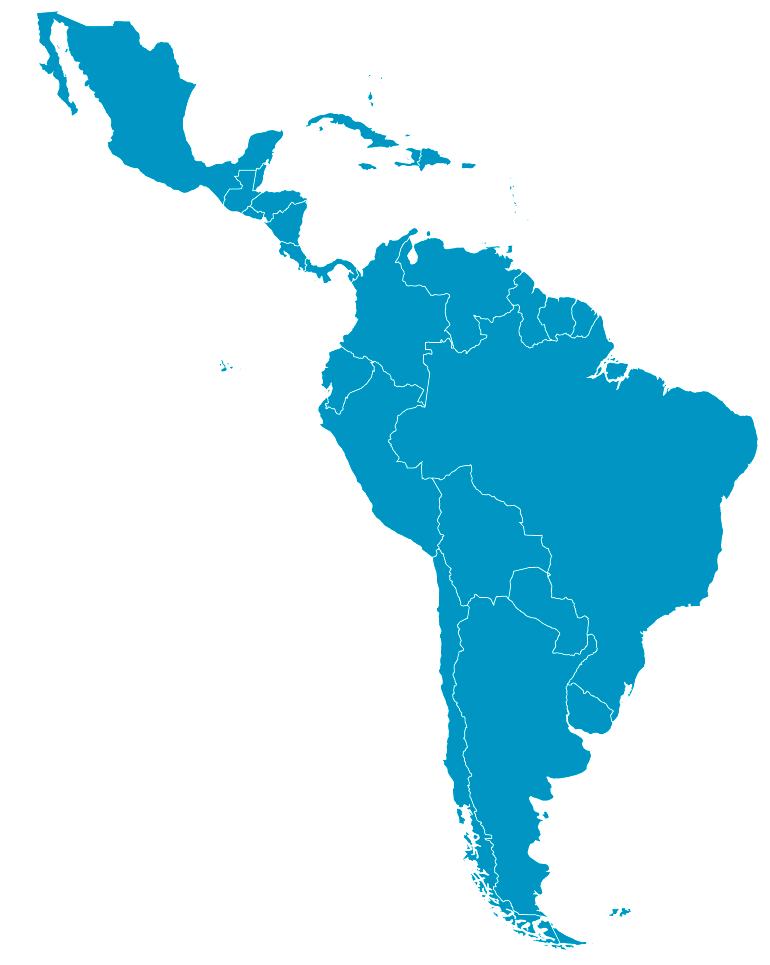Country
Ecuador
By mid-2020, 4.4% of the Ecuadorian population corresponded to international migrants, a figure that showed a 272.3% increase with respect to its level in 2000. The Ecuadorian migration and refugee policy has a human rights approach consolidated in the Constitution of the Republic of Ecuador.
Data: United Nations Department of Economic and Social Affairs, Population Division (2020). International Migrant Stock 2020.
December 6, 2021
This country is part of:
Latin America and the CaribbeanLatin America
Share

Country context
Spanish
Language17.643.060
Total population$98.808.010.000
GDP (Current US$)$5.600,4
GDP per capita (Current US$)15 years
Compulsory education4,1% of GDP
Public expenditure on educationSchool enrollment
% gross by year.
Gross enrollment ratio is the ratio of total enrollment, regardless of age, to the population of the age group that officially corresponds to the level of education shown.
Source: World Development Indicators v.4, The World Bank. Download date: December 6, 2021.
Literacy rate
% of people by year.
Literacy rate is the percentage of people who can both read and write with understanding a short simple statement about their everyday life.
Source: World Development Indicators v.4, The World Bank. Download date: December 6, 2021.
Educational attainment for population 25+ years
Cumulative total % by year.
The percentage of population ages 25 and over that attained or completed certain cycles. Data for primary, lower and upper secondary education is shown.
Source: World Development Indicators v.4 The World Bank. Download date: December 6, 2021
International migrant stock by age
Mid-year, 2020.
International migrant stock is the number of people born in a country other than that in which they live. It also includes refugees. The data used to estimate the international migrant stock at a particular time are obtained mainly from population censuses. The estimates are derived from the data on foreign-born population--people who have residence in one country but were born in another country.
Source: United Nations Department of Economic and Social Affairs, Population Division (2020). International Migrant Stock 2020. Download date: December 6, 2021
International migrant stock by age and gender
Mid-year, 2020.
International migrant stock is the number of people born in a country other than that in which they live. It also includes refugees. The data used to estimate the international migrant stock at a particular time are obtained mainly from population censuses. The estimates are derived from the data on foreign-born population--people who have residence in one country but were born in another country.
Source: United Nations Department of Economic and Social Affairs, Population Division (2020). International Migrant Stock 2020. Download date: December 6, 2021
International migrant stock over time
% of total population by year.
International migrant stock is the number of people born in a country other than that in which they live. It also includes refugees. The data used to estimate the international migrant stock at a particular time are obtained mainly from population censuses. The estimates are derived from the data on foreign-born population--people who have residence in one country but were born in another country.
Source: United Nations Department of Economic and Social Affairs, Population Division (2020). International Migrant Stock 2020. Download date: December 6, 2021
Regional overview
Regional Mapping
The quantitative dimension of the Monitoring Framework is complemented by contextual information regarding the existence and characteristics of educational policy actions aimed at achieving the right to education of people on the move. This information includes national laws and policies and international coordination mechanisms.Good practices
The Monitoring Framework also includes an inventory of good practices for guaranteeing the right to education of students on the move. This inventory shares inclusive educational experiences and promotes reflection processes based on them. Dedicating a space to highlight good practices is valuable, as it allows actors and decision-makers to consider successful routes adopted in different contexts and engage in collaborative learning.Mobility data
Indicators' Matrix
The quantitative component is based upon the need to monitor the right to and in education. Therefore, it is designed to monitor the conditions for education and the entire school journey. Thus, it operates according to a matrix logic, articulating the five dimensions (Affordability/Availability, Accessibility, Acceptability, Adaptability and Accountability) with the structural cut-off and the three analytical cut-offs (access, permanence and progression and graduation). This makes it possible to evaluate progress in a particular dimension of the right to education, while providing information on specific behaviors in the school itinerary, which structures a view that reflects global as well as particular aspects. The final result consists of twenty indicators.
Affordability |
Accessibility |
Acceptability |
Adaptability |
Accountability |
|
|---|---|---|---|---|---|
Structural |
1. Legal framework | 5. Public strategies | 10. Public policies | 16. Regulatory framework | 19. Accessibility to data 20.Reporting countries |
Access |
2. Gross coverage rate | 6. Enrolled foreign students 7. Primary timely enrollment 8. Distribution of foreign students |
11. Educational establishments | 17. Leveling/adaptation courses access | |
Permanence |
3. Transition rate | 9. Repetition (retention) rate | 12. Lag 13. Intra-annual dropout 14. Inter-annual dropout 15. Parity index |
||
Graduation |
4. Graduated foreign students | 18. Academic achievement | |||
1. Legal framework guaranteeing the access of migrants to the school system regardless of their immigration status
2. Gross coverage rate for foreign students
. . .
6. Ratio of foreign students enrolled in the educational system
Dimension
Accesibility
Analytical scope
Access
Definition
It is the number of foreign girls and boys enrolled in the educational system in relation to the total number of students enrolled in the formal educational system. It evaluates the participation of foreign children in the education system. It can be understood as a measure of the degree of national effort to improve access.
Source(s)
Educational Management Information Systems.




